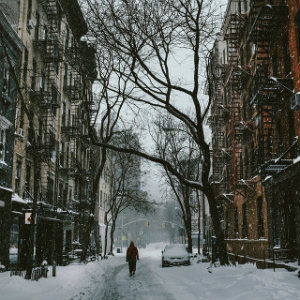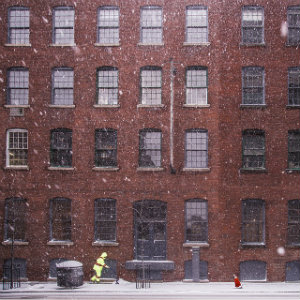Hills And Ridges Doctrine
Under Pennsylvania law, property owners are bound by the Hills and Ridges Doctrine. This law establishes rules for clearing ice and snow which account for the specific climate conditions of this region. Slippery or icy walking conditions in and of themselves are not quite enough to prove negligence in a slip and fall accident. Instead, there are a few more specific criteria which a plaintiff must prove:
- Snow and ice had accumulated on the sidewalk in ridges or elevations of such size and character as to unreasonably obstruct travel and constitute a danger to pedestrians traveling thereon.
- The property owner had notice, either actual or constructive, of the existence of such condition.
- It was the dangerous accumulation of snow and ice which caused the plaintiff to fall.
Because of the high frequency of winter weather conditions in this region, lawmakers adopted this doctrine to protect property owners from unreasonable burdens related to clearing walking surfaces. For example, it would be extremely difficult to clear an icy or snowy walkway during the middle of the storm. Therefore, a property owner may not be held liable for an accident which occurred during or immediately after a storm. However, ignoring accumulations for days afterward may constitute negligence.
Exceptions To Hills And Ridges
The Hills And Ridges Doctrine is complicated and must be applied on a case by case basis. There are exceptions to this rule which depend on the specific circumstances of the case.
Underlying Defects
If it can be proved that icy conditions were caused by a defect in the underlying surface, then the property owner may still be found negligent without satisfying the three criteria of the Doctrine.
For example, in Clayton v. Durham, 417 A.2d 1196 (Pa. Super. 1980), the court found an exception to this rule because a sidewalk depression had caused water to accumulate and freeze. By failing to correct this fault, the property owner was found negligent.
Isolated Patches
Exceptions are also made if a fall resulted from an isolated patch of ice, and the general conditions of the area were not icy or slippery. For example, if a pedestrian slips on a patch of ice outside of a business several days after a snowstorm, there is a good chance that the property owner would be found negligible for not clearing the patch.
Common Injuries
Dangerous walking conditions can lead to serious injuries. These injuries may affect victims for weeks, months, or in extreme cases, leave them permanently disabled. Some examples of common injuries include:
- Broken bones - The impact of a fall on hard concrete can easily lead to bone fractures.
- Traumatic brain injuries - Many S&F victims hit their heads hard once they land on the ground, which can lead to a traumatic brain injury such as a concussion.
- Back injuries - Victims who land on their back may experience an array of back problems, including broken vertebrae and chronic back pain.
- Bruises - Serious bruising may occur which can make daily life and normal physical motions unnecessarily painful.
- Spinal cord injuries - In some cases, victims may suffer from serious spinal cord injuries. These are some of the most serious injuries and can leave victims permanently disabled or even paralyzed.
The recovery process for these injuries is extremely taxing for victims - often leading to high medical bills, loss of income and working potential, pain and suffering, and a loss of quality of life. If an insurance policy proves inadequate for covering expenses, a personal injury lawsuit may be the best way to hold at-fault parties responsible for the negligence which caused a serious injury.
More Slip & Fall Info










